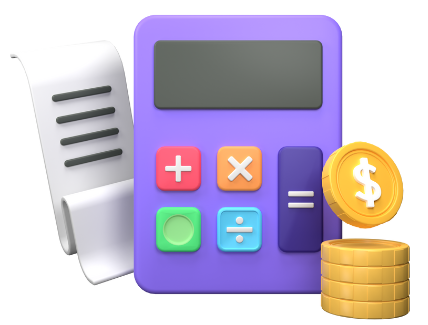
Understanding Federal Tax Brackets 2023-2024
As we move into the new year, it’s essential to understand the changes in the federal income tax brackets. The IRS adjusts these tax brackets each year to account for inflation, and being aware of these changes can help you plan your finances more effectively. Meanwhile, This article aims to provide a comprehensive guide to the “Tax Brackets 2023”.
What Are Tax Brackets?
Tax brackets are ranges of income to which specific tax rates apply. The U.S. operates under a progressive tax system, meaning that higher income levels are taxed at higher rates. It’s important to note that the rate for each bracket only applies to the income within that range.
Federal Income Tax Brackets for 2023
Here are the federal income tax brackets for 2023:
| Tax Rate | For Single Filers | For Married Individuals Filing Joint Returns | For Heads of Households |
|---|---|---|---|
| 10% | $0 to $11,000 | $0 to $22,000 | $0 to $15,700 |
| 12% | $11,000 to $44,725 | $22,000 to $89,450 | $15,700 to $59,850 |
| 22% | $44,725 to $95,375 | $89,450 to $190,750 | $59,850 to $95,350 |
| 24% | $95,375 to $182,100 | $190,750 to $364,200 | $95,350 to $182,100 |
| 32% | $182,100 to $231,250 | $364,200 to $462,500 | $182,100 to $231,250 |
| 35% | $231,250 to $578,125 | $462,500 to $693,750 | $231,250 to $578,100 |
| 37% | $578,125 or more | $693,750 or more | $578,100 or more |
Federal Income Tax Brackets for 2024
Below are the federal income tax brackets for 2024 in the United States:
| Tax Rate | For Single Filers | For Married Individuals Filing Joint Returns | For Heads of Households |
|---|---|---|---|
| 10% | $0 to $11,600 | $0 to $23,200 | $0 to $16,550 |
| 12% | $11,600 to $47,150 | $23,200 to $94,300 | $16,550 to $63,100 |
| 22% | $47,150 to $100,525 | $94,300 to $201,050 | $63,100 to $100,500 |
| 24% | $100,525 to $191,950 | $201,050 to $383,900 | $100,500 to $191,950 |
| 32% | $191,950 to $243,725 | $383,900 to $487,450 | $191,950 to $243,700 |
| 35% | $243,725 to $609,350 | $487,450 to $731,200 | $243,700 to $609,350 |
| 37% | $609,350 or more | $731,200 or more | $609,350 or more |
Additionally, These tax brackets are adjusted each year to account for inflation. The U.S. has a progressive tax system, where portions of a person’s taxable income can fall into different brackets to tax at different rates.
How to Determine Your Tax Bracket
Determining your Tax bracket for 2023-2024 involves understanding your taxable income. Your taxable income is your gross income minus any deductions or exemptions you’re eligible for. Once you’ve calculated your taxable income, you can refer to the tax brackets above to see which range your income falls into.
How to File Federal Tax with Eligible Tax Brackets?
Filing federal taxes involves several steps:
- Identify Your Taxable Income: Your taxable income is your total income minus any deductions or exemptions you qualify for. This is the income that will be subject to tax.
- Collect Your Documents: Gather all necessary documents that show your income and any tax-deductible expenses you’ve paid. This typically includes a W-2 form from your employer and any 1099 forms for other income or interest.
- Complete Your Tax Return: You’ll need to fill out Form 1040 or 1040-SR. If you’re filing online, the software will guide you through the process. However, If you’re filing a paper return, you can use the tax tables provided by the IRS to determine your tax.
- Claim Deductions and Credits: If you’re eligible for any tax deductions or credits, you’ll claim them on your tax return. These can lower your taxable income or reduce the amount of tax you owe.
- Calculate Your Tax: After you’ve claimed all your deductions and credits, you’ll calculate your tax. Also, You’ll use the tax table that corresponds to your filing status and taxable income.
- Submit Your Tax Return: Once you’ve completed your tax return, you’ll need to submit it to the IRS. You can do this online, by mail, or through a tax professional.
Further, tax laws can be complex and change frequently. It’s always a good idea to consult with a tax professional if you have any questions or need assistance with your tax return
Conclusion
Understanding your tax brackets is crucial for effective financial planning. As we moved into 2023, take the time to understand how these changes might affect you. And remember, when in doubt, it’s always a good idea to consult with a tax professional.
Explore our Salary Calculators to calculate your federal taxes as per the updated tax brackets.
Frequently Asked Questions
As per Tax Brackets 2023 , The highest tax bracket in 2023 is 37%, which applies to single filers with taxable income of $578,125 or more, married individuals filing joint returns with taxable income of $693,750 or more, and heads of households with taxable income of $578,100 or more.
Tax brackets are typically adjusted each year to account for inflation. However, significant changes to tax law can also result in changes to the tax brackets.
Your filing status can significantly affect your tax brackets as it determines the income ranges to which each tax rate applies. For example, the income ranges are generally higher for married individuals filing jointly compared to single filers.
Your marginal tax rate is the rate you would pay on an additional dollar of income, i.e., the rate for your highest tax bracket. In contrast, your effective tax rate is the average rate at which your total income is taxed, taking into account all the brackets your income falls into.
Tax brackets are the divisions at which tax rates change in a progressive tax system. Also important to note that, they are the cutoff values for taxable income — income past a certain point will be taxed at a higher rate.
In the United States, there are nine states where residents are not required to pay state income tax. These include Alaska, Florida, Nevada, South Dakota, Tennessee, Texas, Washington, Wyoming, and New Hampshire. However, it’s important to remember that while these states don’t have an income tax, they may have other forms of taxes. For instance, Tennessee has one of the highest combined sales tax rates in the country, and Washington state charges a significant tax on gasoline.


3 thoughts on “Tax Brackets 2023-2024 in U.S.”